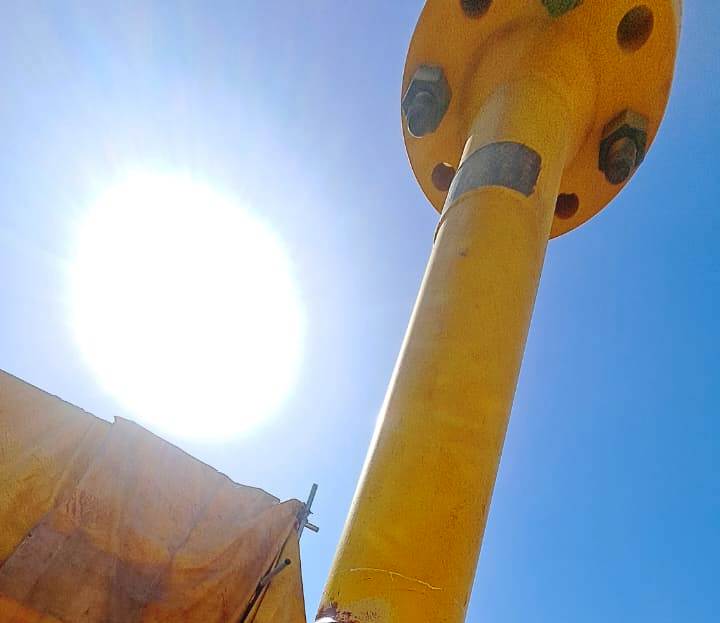Offshore jacket structures, the steel frameworks anchoring oil and gas platforms to the seabed, rely on critical components like J-tubes and risers to ensure operational efficiency and connectivity between subsea systems and topside facilities. These components serve distinct yet complementary roles in the infrastructure of offshore installations, facilitating the transport of cables, fluids, and other essentials. This article explores the purpose, design, and significance of J-tubes and risers in offshore jacket systems.
What Are J-Tubes?
J-tubes are J-shaped conduits pre-installed on offshore jacket structures, designed to guide and protect cables or small pipelines from the seabed to the platform’s topside. Their primary function is to route electrical cables, control cables, or umbilical lines that connect subsea equipment, such as wellheads or sensors, to the platform.
Key Uses of J-Tubes
- Cable Routing: J-tubes provide a secure pathway for power and communication cables, ensuring reliable connections for subsea operations.
- Protection: They shield cables from harsh marine environments, including waves, currents, and potential mechanical damage during installation or operation.
- Ease of Installation: The J-shape allows cables to be pulled through the tube after the jacket is installed, simplifying the process of connecting subsea systems.
Design Features
J-tubes are typically made of steel and are sized to accommodate specific cable diameters. The curved lower end, positioned near the seabed, facilitates smooth cable entry, while the upper end extends to the platform deck. This design minimizes bending stress on cables and ensures long-term durability.
Top 10 Offshore Construction Companies Worldwide
What Are Risers?
Risers are vertical or near-vertical conduits that transport fluids—such as oil, gas, or water—between the seabed and the platform. They are essential for the production, processing, and export of hydrocarbons in offshore oil and gas operations.
Key Uses of Risers
- Fluid Transport: Risers carry produced hydrocarbons from subsea wells to the platform for processing or transfer processed fluids to export pipelines or storage facilities.
- Injection: They enable the injection of water, gas, or chemicals into subsea reservoirs to enhance production or maintain reservoir pressure.
- Structural Integration: Risers are clamped or guided by the jacket structure, designed to withstand environmental loads (e.g., waves, currents) and internal fluid pressures.
Design Features
Risers can be rigid (made of steel) or flexible, depending on the operational requirements. They are engineered to handle high-pressure fluids and are often coated with corrosion-resistant materials to withstand exposure to seawater and aggressive chemicals. Risers are supported by the jacket through clamps or guides, ensuring stability under dynamic marine conditions.
J-Tubes vs. Risers: A Comparison
While J-tubes and risers are both integral to offshore jacket structures, they serve different purposes:
- Function: J-tubes are used for cables and umbilicals, while risers transport fluids.
- Size: J-tubes are smaller in diameter, tailored to cable dimensions, whereas risers are larger to accommodate high-volume fluid flow.
- Material and Durability: Both are typically steel, but risers require additional coatings or materials to resist corrosion from fluid exposure.
Integration in Offshore Jacket Structures
The offshore jacket, a robust steel framework anchored to the seabed, provides the structural backbone for J-tubes and risers. J-tubes are welded or clamped to the jacket, with their lower ends positioned near the seabed and upper ends at the platform deck. Risers, similarly, are secured to the jacket using clamps or guides, ensuring they remain stable under environmental and operational stresses. Together, these components enable seamless connectivity between subsea systems and the platform, supporting the production and operational needs of offshore installations.
Significance in Offshore Operations
J-tubes and risers are critical to the success of offshore oil and gas platforms. J-tubes ensure reliable power and communication links, enabling remote monitoring and control of subsea equipment. Risers, on the other hand, are the lifeline for hydrocarbon production, facilitating the safe and efficient transport of fluids. Their robust design and integration with the jacket structure ensure operational continuity in the challenging marine environment.
Conclusion
In offshore jacket structures, J-tubes and risers play indispensable roles in connecting subsea systems to platform facilities. J-tubes protect and guide cables, while risers transport fluids, each contributing to the operational efficiency and safety of offshore installations. Understanding their functions and design highlights the engineering precision behind offshore oil and gas infrastructure, ensuring reliable performance in one of the most demanding environments on Earth.

